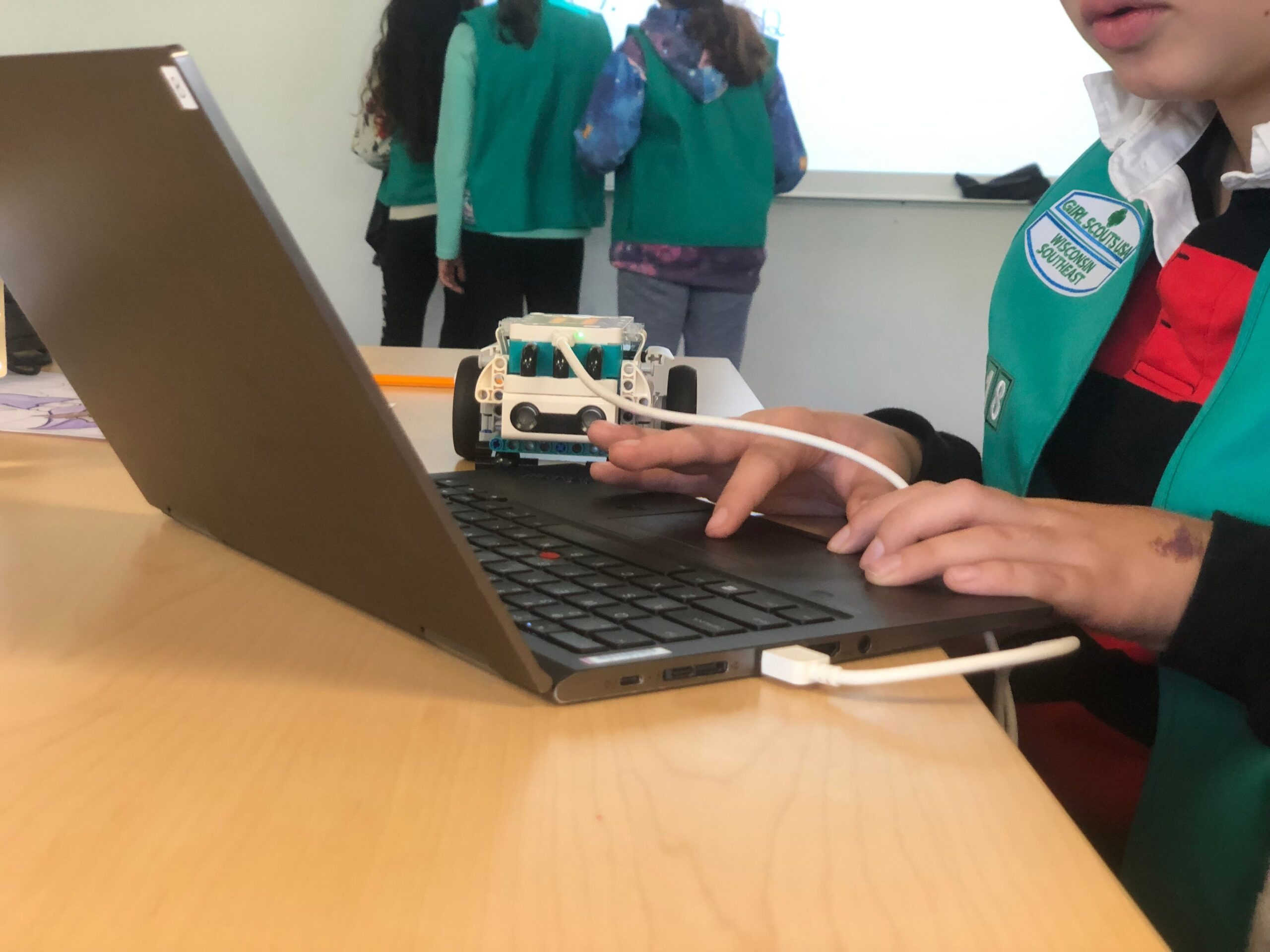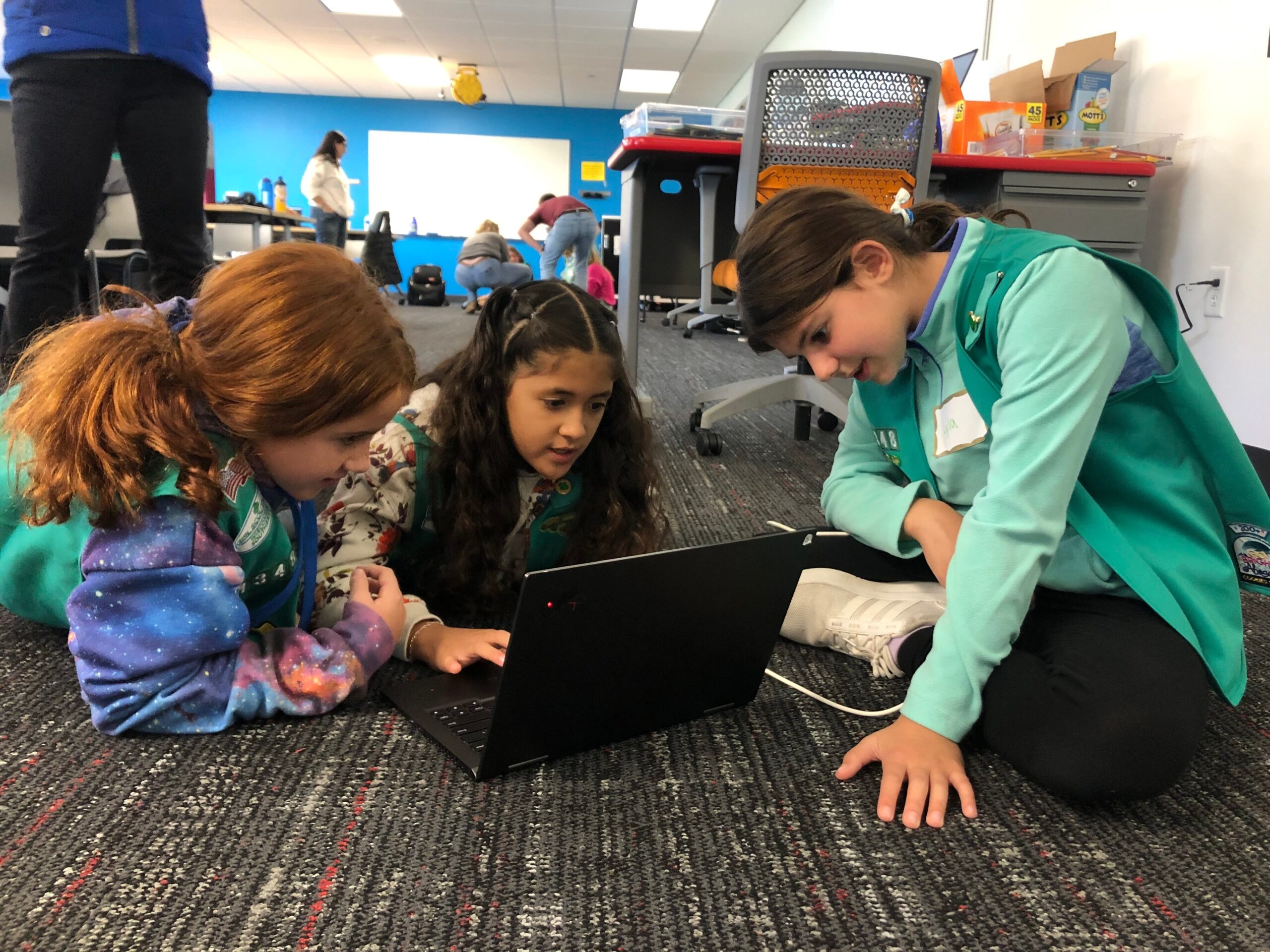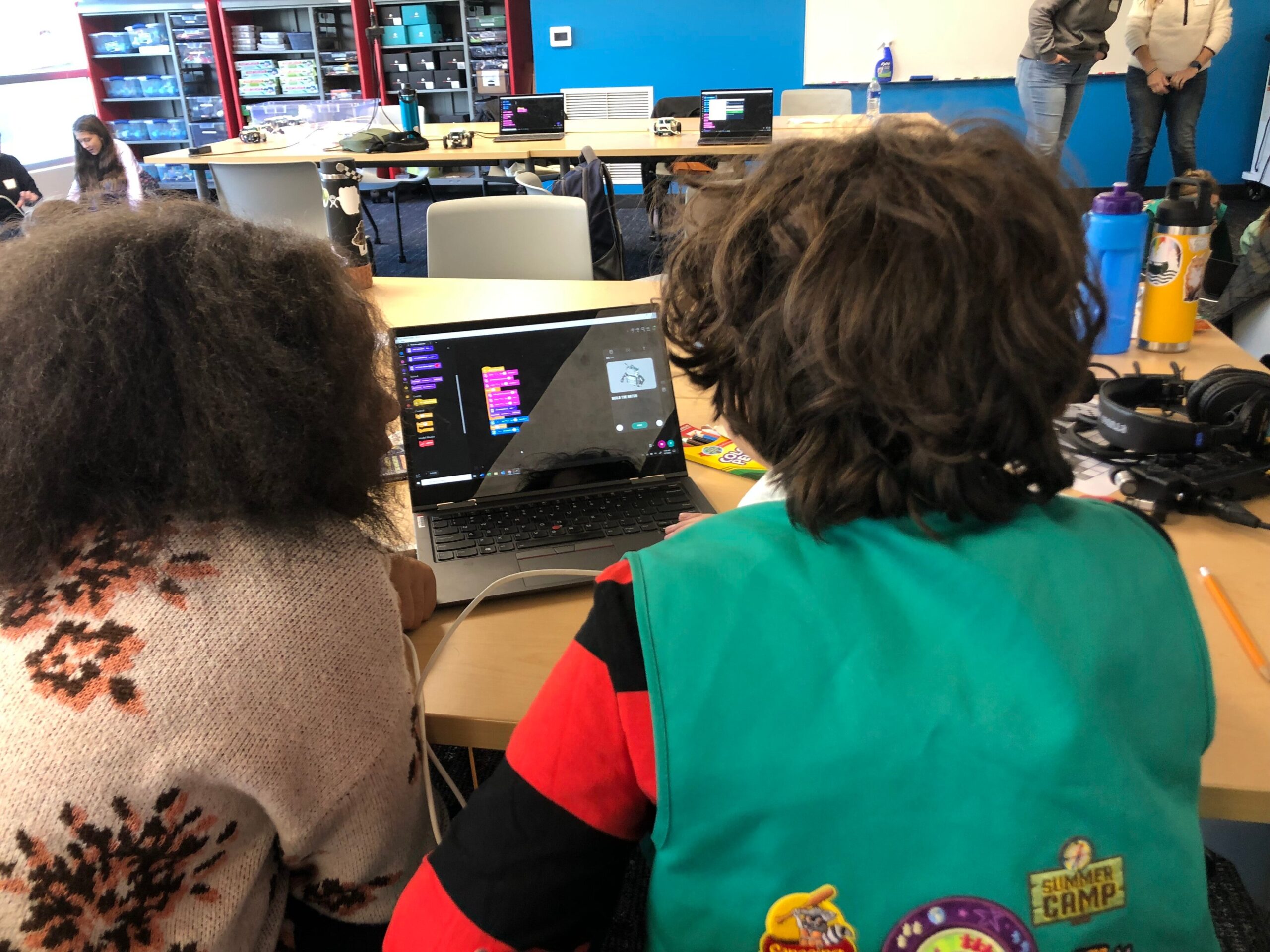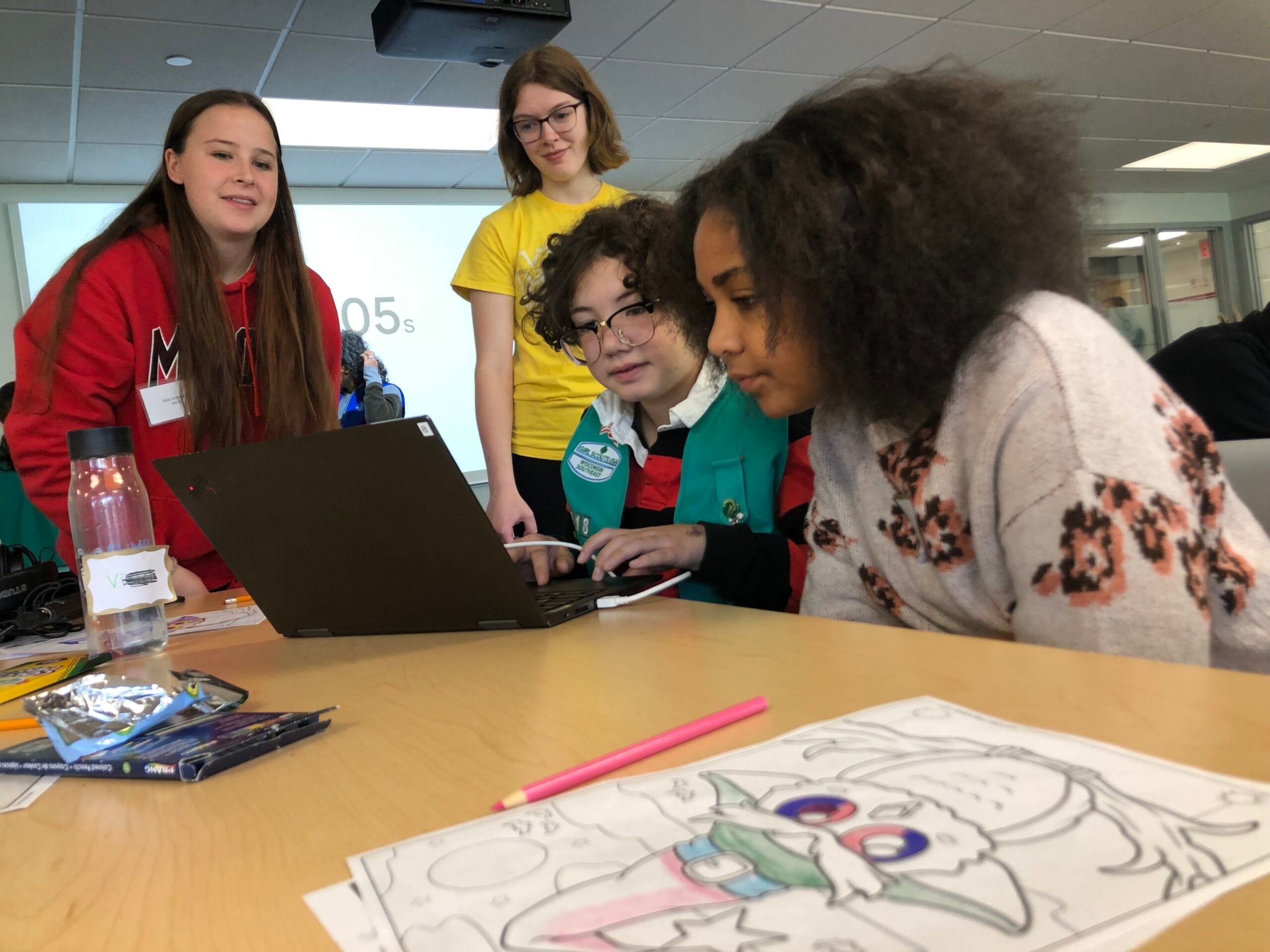At home, Vi Michels has a circuit board that can light up and make noise. Sometimes she’ll use software to program an elf that delivers packages across her computer screen. But the 10-year-old fifth grader had no experience coding robots.
That’s until she went to STEM Day, an annual event hosted by Girl Scouts Wisconsin Southeast and the Milwaukee School of Engineering. The purpose of the collaboration is to introduce girls to science, technology, engineering and mathematics.
This month, the WE Energies STEM building on the MSOE campus buzzed with about 100 Girl Scouts between 7 and 11 years old, as well as troop leaders, MSOE students and staff and other volunteers.
News with a little more humanity
WPR’s “Wisconsin Today” newsletter keeps you connected to the state you love without feeling overwhelmed. No paywall. No agenda. No corporate filter.
As Girl Scouts huddled over laptops, their spirits were high. One scout, Embry Dargatz, named her robot Thea. She was inspired by technology when she saw a holiday light show in her neighborhood.
“I like coding. I love robotics. It’s really fun,” Embry said.
The event is designed to expose girls to different industries before the window of opportunity closes, as a study from information technology consulting firm Accenture and computer science nonprofit Girls Who Code shows that girls’ interest in computing peaks in middle school.
“They get to use their imagination, but as well think, ‘What could robots potentially do that would be helpful in the future?’” said Sarah Stelsel, STEM program coordinator at MSOE.
The private university in downtown Milwaukee offers bachelor’s and master’s degrees in engineering, business and nursing. MSOE also offers programming for K-12 students, including the Girl Scout STEM Day.

The earlier girls get involved in STEM, the better
Vi wants to become an animator, so learning coding and other STEM skills is important to her.
“In animation, you have a goal to make something in art, which I think is amazing,” Vi said.
The National Girls Collaborative Project reported young girls do not significantly differ in their math and science abilities compared to boys of the same age. But young girls are less interested and confident in their STEM skills and do not feel as certain that they belong in those fields.
According to the Society of Women Engineers, in 2020, the percentage of bachelor’s, master’s and doctorate degrees awarded to women in engineering, manufacturing and construction was 23.4 percent. Men earned 76.6 percent of those degrees.
Liz Taylor is the director of STEM at MSOE. She said young girls are open-minded and eager to learn, so it’s important to expose them to STEM early and often before it’s too late.
“It’s being a problem solver. It’s being creative. It’s helping others,” Taylor said. “The earlier we can get girls, or really any student, excited about STEM and feeling like they can be in it, the better.”
A study from Microsoft and a researcher at Southern Utah University found that girls who participate in STEM clubs and activities outside of school are more likely to say they will pursue STEM subjects later in their education. Support from parents, teachers and women in the industry can also increase interest.
Those insights have led to initiatives like the Girl Scouts event around the state. Stellar Tech Girls, outside of Madison, offers after-school, weekend and summer workshops for girls and nonbinary kids ages 9 to 14. Maydm, in Madison, provides girls and youth of color in middle and high school the experience to pursue careers in STEM. Contrapt Wisconsin is a statewide STEM competition for middle schoolers.
Partners from the STEM sector were at the event, including representatives from Eaton, Husco Automotives and Milwaukee Tool. They were assisting the Girl Scouts in their projects. Stelsel said the purpose is to give the young girls role models.
“They can relate to them and talk with them and maybe spark some kind of interest they didn’t even know they had,” Stelsel said.
‘I want them to feel empowered’
Vi worked with a fellow Girl Scout, Zoe Brooks, and together they were able to make the robot, which they named Po-po, move forward and turn in circles. The final step was to make it meow like a cat, but they couldn’t solve that problem before their 15 minutes were up.
The Girl Scouts gathered at the front of the room to present what their robots could do. One group focused on the capabilities of the screen that could light up. The robot flashed a smiling face, spelled out “Robot Nation,” and then flashed a frowning face to indicate it was sad because the presentation was over.

Vi and Zoe showed off Po-po to their troopmates. Even without the meow, the other girls applauded them when they were finished.
“We had a lot of other stuff in it that didn’t work. It’s fine. Po-po is amazing,” Vi said.
Embry’s robot, Thea, couldn’t produce the sound she incorporated into the code. But that didn’t discourage her.
“You come across lots of problems in your life, but for me, I always try and get back up from it,” Embry said. “If I can’t, that’s a sign to me that this is too hard, let’s try again when I’m a little bit better at it.”
Even as a senior studying mechanical engineering at MSOE, Caitlin Hunter practices problem-solving. She taught a group of Girl Scouts about package engineering during STEM Day.
“Robots are not something that comes naturally, immediately to everyone. And so there’s definitely a little bit of frustration at the beginning,” Hunter said.
But the skills are transferable.
“I am doing the same process that I was just teaching a 7-year-old and I have to use it in my everyday life,” she said.

Jordyn Sievert, a senior at MSOE studying biomedical engineering, also volunteered at the event. She said people underestimate her because she is a woman.
“People don’t necessarily expect me to get a full grasp on every challenge thrown my way,” she said. “But that makes it even more exciting to prove that I can do this just as well, and sometimes better, than everybody else.”
She doesn’t want these Girl Scouts to face the same adversity.
“I want them to feel empowered and face every challenge head-on,” Sievert said.
In 2019, women made up 48 percent of the workforce but only 27 percent of all STEM workers, according to the U.S. Census Bureau. Only about a quarter of computer workers and 15 percent of engineering workers were women. The Association of American Universities found that barriers to gender balance in the STEM workforce included gender stereotypes and a male-dominated culture.
Taylor, director of STEM at MSOE, said when the school hosts women-only events, there is a “different energy” that can make the girls feel welcomed.
“When they’re not totally sure they belong yet, they tend to be shy, not willing to speak up all the time on their ideas,” she said.
But when girls choose to participate in a program, as the Girl Scouts did, Taylor said the girls are excited and have a sense of belonging.
Embry said she felt that way.
“Today I learned a lot about robotics,” she said. “I would love to come back here. It was amazing.”
Wisconsin Public Radio, © Copyright 2025, Board of Regents of the University of Wisconsin System and Wisconsin Educational Communications Board.



